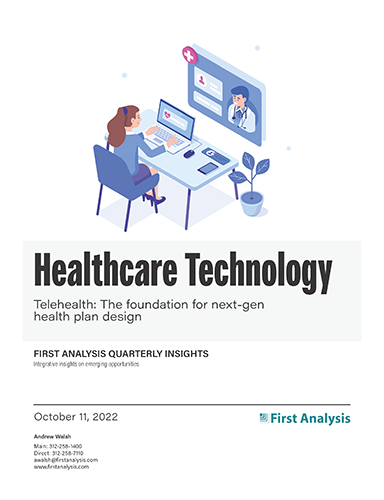Quarterly insights: Healthcare technology
Telehealth: The foundation for next-gen health plan design

The COVID-19 pandemic, which temporarily made remote healthcare a necessity, has been the catalyst for regulatory and societal changes that have made telehealth a mainstream healthcare delivery channel.
Telehealth’s increased prominence has spotlighted its ability to bend the healthcare cost curve while at the same time improving healthcare quality and healthcare access equity. These compelling benefits have prompted innovation in designing health plans that leverage telehealth technology to improve healthcare delivery and access. The advent of virtual health plans (VHPs) is an example.
We trace telehealth’s path from its early beginnings to its emergence into the mainstream and the advent of VHPs. We also discuss several VHP providers and telehealth’s promising future.
TABLE OF CONTENTS
Includes discussion of ALHC, HUM, OSCR, TRMK, UNH and ReviveHealth
- Key regulatory barriers to telehealth falling in the pandemic’s wake
- Telehealth + plan design = sustainable cost reduction?
- Advantages of virtual health plans
- Payer tech index sustaining Q3 rebound
- Q3 healthcare technology M&A bounces back from low
- Q3 healthcare technology private placement activity continues to decline
Key regulatory barriers to telehealth falling in the pandemic’s wake
The earliest uses of telemedicine can be traced to 1959 when the University of Nebraska established a two-way television system to transmit information to medical students across campus and later linked the same system to a state hospital to perform video consultations. But although much of the technology needed for telehealth has been available for some time, numerous barriers have prevented widespread adoption until now. These barriers are primarily issues related to cross-state licensing for medical providers but also include regulatory challenges, financial challenges and lack of broadband infrastructure.

Request full report
To access the full report, please provide your contact information in the form below. Thank you for your interest in First Analysis research.
